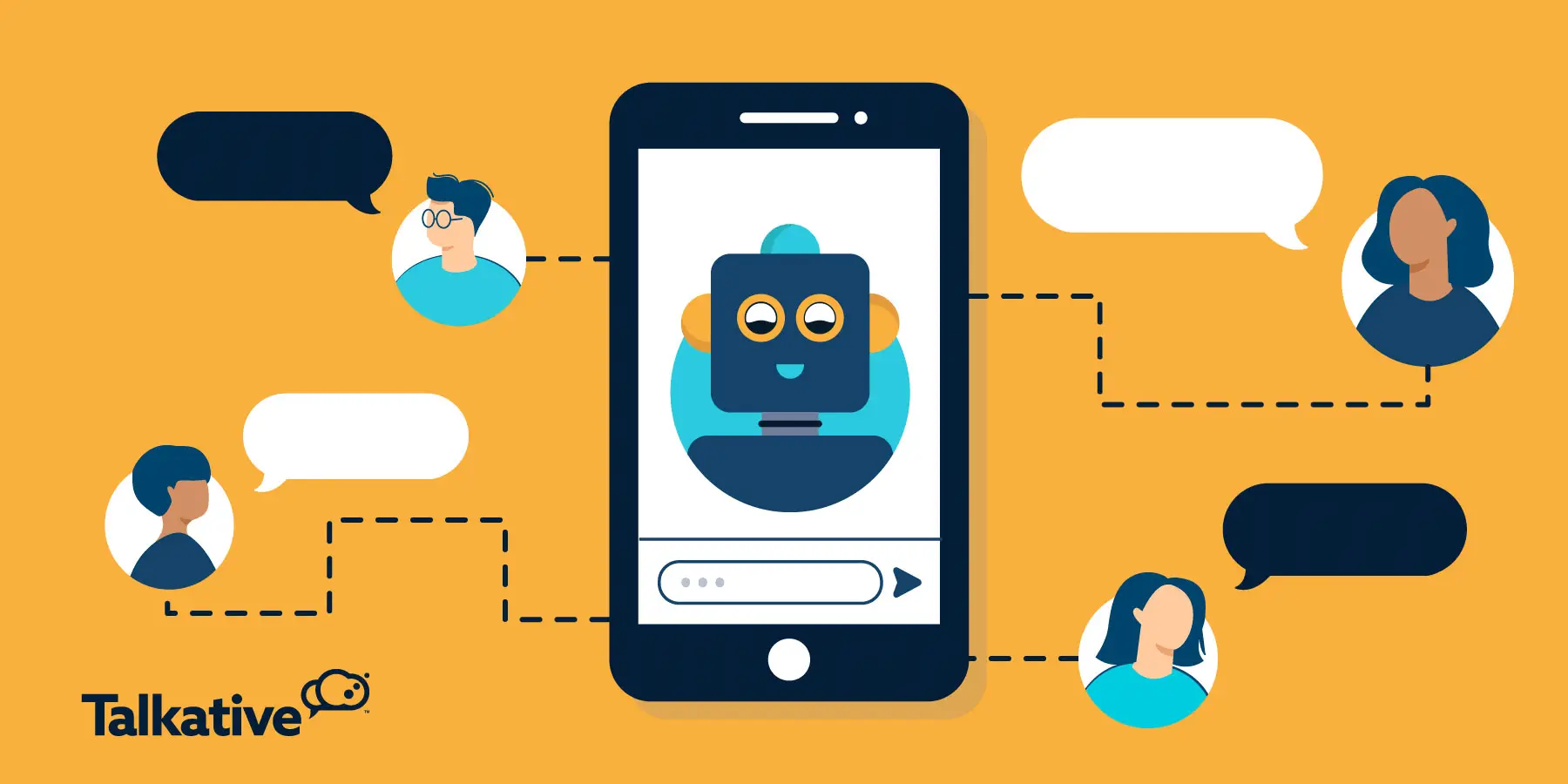Welcome to “How to Use Chatbots to Enhance Customer Interaction on Social Media”! In this article, you’ll discover how powerful chatbots can be for boosting customer engagement and driving meaningful interactions on your social media platforms. We’ll guide you through the benefits of leveraging these AI-powered tools, from providing instant customer support to personalizing user experiences and gathering valuable insights. By the end, you’ll feel equipped to integrate chatbots into your social media strategy, enhancing your brand’s presence and creating a seamless, enjoyable experience for your audience. Have you ever wondered how you can take your customer interaction on social media to the next level?
Well, you’re in the right place! In today’s digital landscape, chatbots are becoming a game changer for businesses big and small. Whether you’re a seasoned marketer or just starting to explore the wonders of social media, chatbots can be the perfect tool to enhance customer interaction, improve response times, and boost overall customer satisfaction. Let’s dive into how you can leverage them effectively.

This image is property of media.sproutsocial.com.
What Are Chatbots?
Chatbots are automated programs designed to interact with users in a conversational manner. These bots can handle various tasks, ranging from answering frequently asked questions to guiding users through complex processes.
Types of Chatbots
There are several types of chatbots, each with its own unique capabilities. Here’s a quick overview:
| Type | Description |
|---|---|
| Rule-based | Operate on a fixed set of rules and answer pre-defined questions. |
| AI chatbots | Use artificial intelligence to understand and respond to user input more contextually. |
| Hybrid chatbots | Combine rule-based and AI capabilities for more versatile interaction. |
Knowing the type of chatbot that suits your needs best will go a long way in effectively implementing it into your social media strategy.
Why Use Chatbots for Customer Interaction?
It’s important to understand why chatbots can be a valuable asset for enhancing customer interaction on social media. Here are some compelling reasons:
Improved Response Time
One of the biggest advantages of using chatbots is that they can improve response times dramatically. In today’s fast-paced world, customers expect quick answers to their queries.
Cost-Effective
Chatbots can handle multiple customer interactions simultaneously, making them a cost-effective solution for businesses looking to scale their customer service operations without hiring additional staff.
24/7 Availability
Unlike human agents, chatbots can operate 24/7, providing constant support to your customers and ensuring no queries go unanswered.
Personalization
Advanced AI chatbots can offer personalized recommendations and responses based on the customer’s historical data and interactions. This results in a more customized and satisfying experience for the user.
How to Implement Chatbots on Social Media
Implementing chatbots on your social media platforms can be broken down into several manageable steps. Here’s a detailed guide:
Step 1: Define Your Objectives
First, you need to clearly define what you aim to achieve with the chatbot. Are you looking to improve customer support? Increase engagement? Generate leads? Having a clear objective will guide you through the subsequent steps.
Step 2: Choose the Right Platform
Different social media platforms have different requirements and capabilities for integrating chatbots. For instance, Facebook Messenger supports both rule-based and AI chatbots, while Twitter’s chatbot capabilities are more limited.
Step 3: Select the Appropriate Chatbot Type
Based on your objectives and the platform you’ve chosen, select the chatbot type that best meets your needs. For instance, a rule-based chatbot might be sufficient for straightforward customer service, while an AI chatbot could be better for more complex interactions.
Step 4: Design Conversational Flows
Design the conversational flows that your chatbot will follow. This involves scripting the questions and responses and mapping out various user scenarios. Consider including menus, quick replies, and rich media to make the interaction as engaging as possible.
Step 5: Test and Iterate
Before going live, thoroughly test the chatbot to ensure it functions as expected. Involve real users in this phase to get genuine feedback. Based on the feedback, make the necessary adjustments to improve performance.
Step 6: Monitor and Optimize
Once deployed, continually monitor your chatbot’s interactions. Use analytics tools to track metrics like response time, user satisfaction, and issue resolution rates. Regularly update your chatbot based on these insights to keep it effective.
Best Practices for Using Chatbots on Social Media
To get the most out of your chatbots, it’s crucial to adhere to some best practices. Here are some tips:
Maintain a Human Touch
While chatbots can handle many tasks, always provide an option for users to speak to a human agent if needed. This ensures that complex or sensitive issues are adequately addressed.
Keep It Simple
Avoid overcomplicating your chatbot’s conversational flow. Simple, direct interactions lead to better user experiences. Ensure that users can easily navigate through the chatbot without getting confused.
Transparency
Always be transparent about the fact that users are interacting with a bot. This sets the right expectations and also builds trust with your audience.
Personalize Your Interactions
Leverage the data you have to make the interaction more personalized. For example, if a customer has previously interacted with your brand, acknowledge this in your chatbot conversation to make them feel valued.
Collect Feedback
Use your chatbot to gather feedback from users about their experiences. This can help you understand areas for improvement and make data-driven decisions to enhance customer satisfaction.

This image is property of cdn.prod.website-files.com.
Case Studies: Successful Chatbot Implementations
Let’s look at a few case studies of companies that have effectively used chatbots to enhance customer interaction on social media.
Domino’s Pizza
Domino’s implemented a chatbot on Facebook Messenger called “Dom,” which allows users to place orders, track their pizza deliveries, and get customer support.
Results:
- Increased customer engagement
- Higher customer satisfaction rates
- Streamlined order process
Sephora
Sephora uses a chatbot on Kik and Facebook Messenger to provide product recommendations, book in-store makeover appointments, and answer beauty-related queries.
Results:
- Enhanced customer experience
- Elevated customer engagement
- Increased in-store visits
H&M
H&M’s chatbot on Kik offers personalized fashion suggestions based on users’ style preferences. It also allows users to browse and purchase items directly through the chat.
Results:
- Greater user engagement
- Higher conversion rates
- Enhanced shopping experience
Key Challenges and How to Overcome Them
While chatbots offer numerous benefits, you may run into certain challenges. Here are some common issues and how you can address them:
Limited Understanding of Complex Queries
Sometimes chatbots fail to understand complex queries, leading to unsatisfactory customer experiences.
Solution:
- Continuously train your chatbot to handle various scenarios.
- Incorporate a fallback mechanism to escalate complex queries to a human agent.
Data Privacy Concerns
Collecting and storing customer data through chatbots can raise privacy concerns.
Solution:
- Ensure compliance with data protection regulations like GDPR.
- Communicate your privacy policy transparently to users.
Integration Issues
Integrating chatbots with existing systems can sometimes be a challenge.
Solution:
- Choose chatbot platforms that offer robust integration capabilities.
- Work closely with your IT team to ensure seamless integration.
Maintaining Relevance
Keeping your chatbot updated with the latest information and trends can be a daunting task.
Solution:
- Regularly update your chatbot’s knowledge base.
- Make use of analytics to understand what information needs updating.

This image is property of sp-ao.shortpixel.ai.
Future Trends in Chatbot Technology
The world of chatbot technology is continuously evolving. Here are some trends to keep an eye on:
Voice-Activated Chatbots
With the rise of smart speakers and voice assistants, voice-activated chatbots will become increasingly prevalent. These chatbots will allow users to interact with brands using voice commands, making the experience more intuitive and seamless.
Advanced AI Integration
As AI technology continues to advance, chatbots will become even more sophisticated, capable of understanding complex queries, offering personalized recommendations, and learning from past interactions.
Multi-Language Support
The demand for chatbots that support multiple languages is increasing. Businesses looking to expand their global reach will benefit from chatbots that can interact with users in their native languages.
Enhanced Customer Insights
Future chatbots will offer enhanced analytics and insights capabilities, enabling businesses to gain deeper understanding of customer behavior and preferences, thereby allowing for more targeted marketing strategies.
Conclusion
Chatbots are revolutionizing the way businesses interact with their customers on social media. They offer numerous benefits, including improved response times, cost-effectiveness, 24/7 availability, and personalized interactions. By following best practices and continuously monitoring and optimizing your chatbot, you can significantly enhance customer interaction on social media.
So, why wait? Start exploring the incredible benefits that chatbots can bring to your customer interaction strategy today. Implementing chatbots might just be the game-changing move that propels your business to new heights.
Feel free to drop your questions or experiences with chatbots in the comments below. We’d love to hear from you!

This image is property of assets-global.website-files.com.








